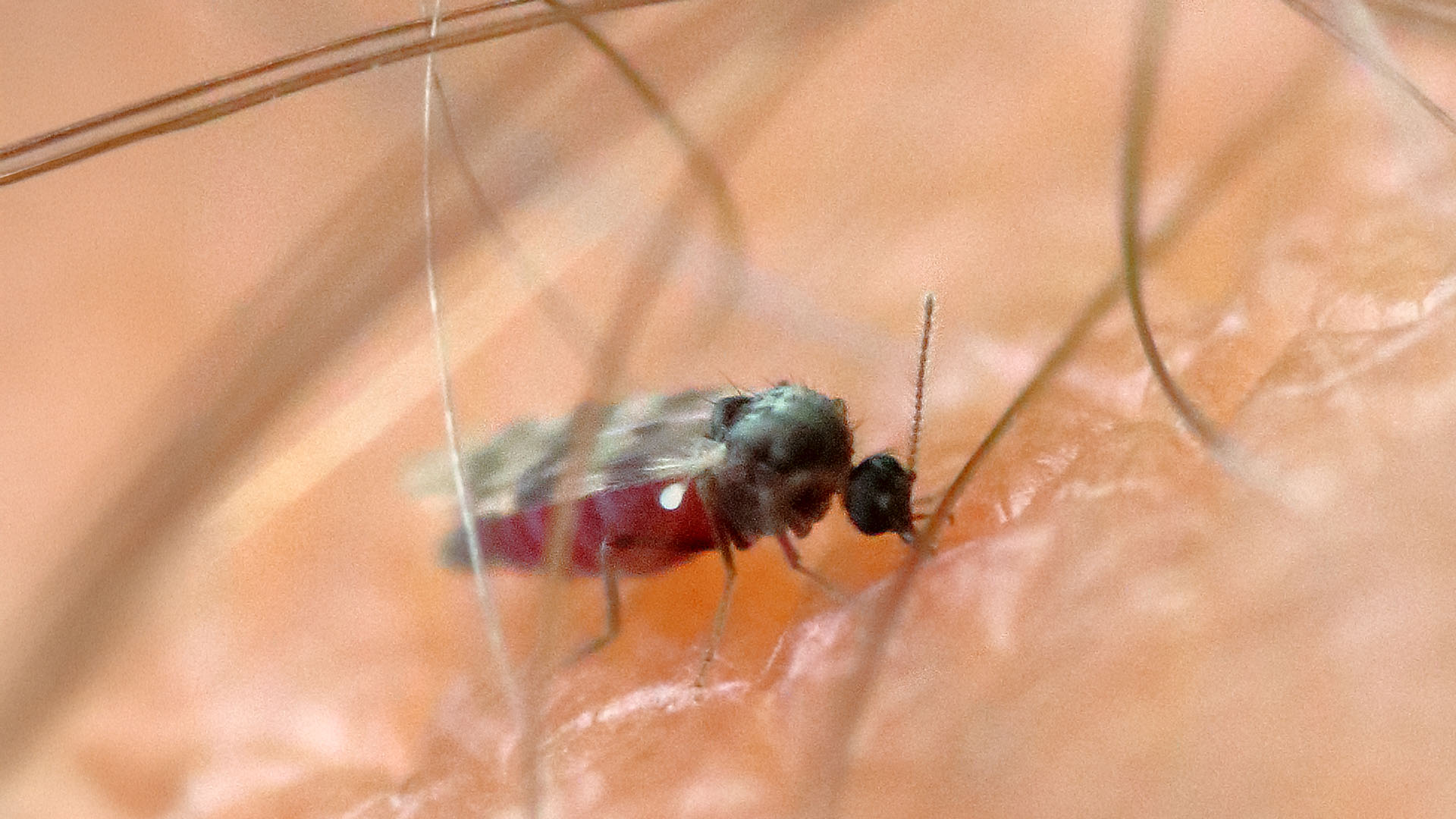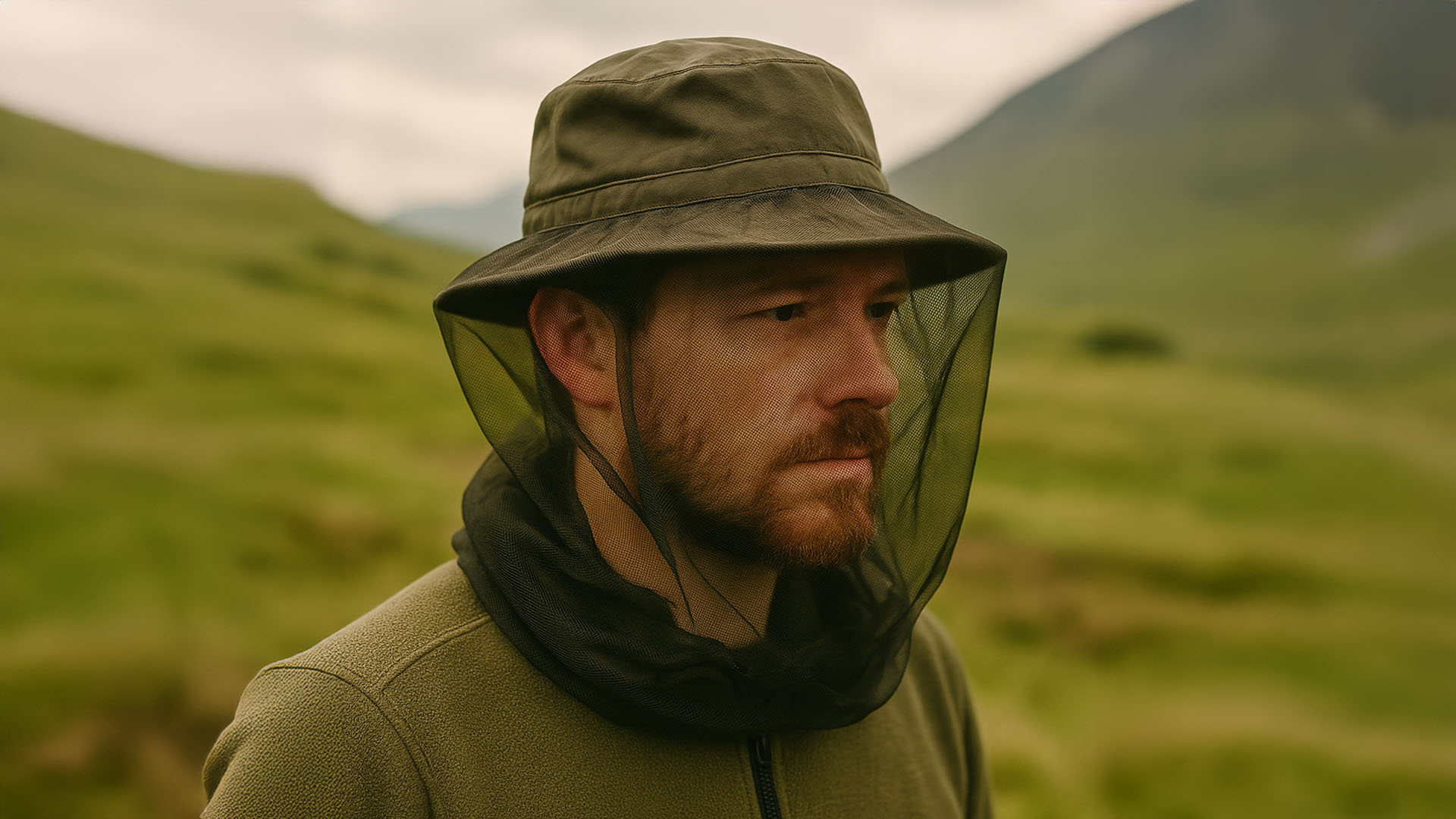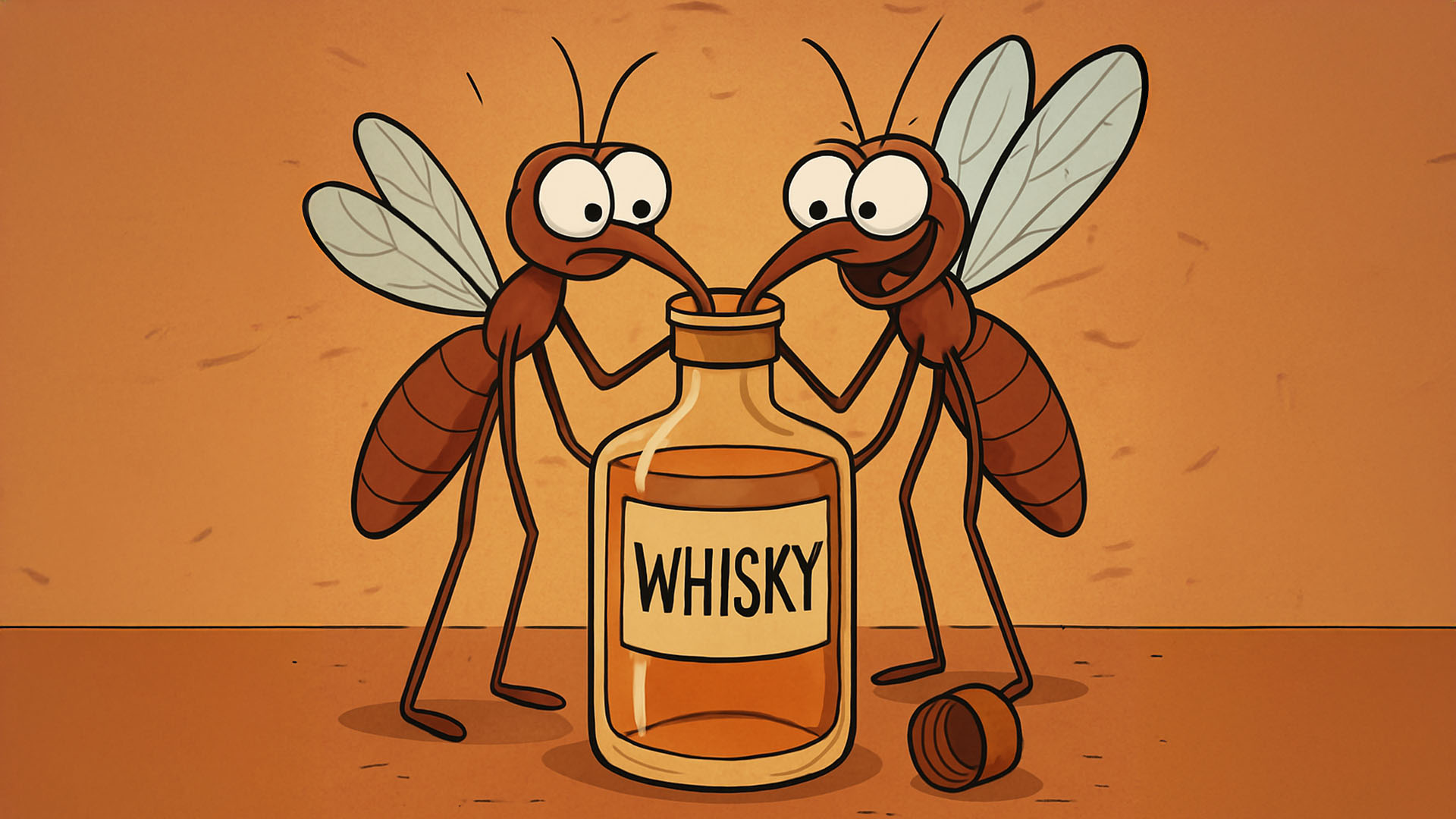
By Dunpharlain – Own work, CC BY-SA 4.0, Link
Understanding Your Enemy: The Mull Midge
Before you can defeat an enemy, you must first understand it. The Highland midge (Culicoides impunctatus) is a tiny, two-millimetre-long insect with a surprisingly powerful bite. While both male and female midges exist, it’s the pregnant females that are the ones out for your blood, as they need a protein meal to lay their eggs. They are not strong flyers and are easily blown off course by even a slight breeze. They thrive in still, humid conditions, particularly around dawn and dusk, and love areas with stagnant water and damp ground—the very places that often make for the most scenic campsites on Mull.
The midge season typically runs from late April to early October, with a peak from June to August. This is when a midge forecast becomes your best friend. Websites and apps dedicated to this (a quick search will reveal the most popular ones) can provide you with daily midge activity ratings for different parts of the island. Checking this before you set off can be a game-changer, allowing you to either plan your route or mentally prepare for the battle ahead.
Choosing Your Campsite: Location, Location, Location
The single most effective way to beat the midges is to choose your campsite wisely. This is a decision you make before a single tent peg goes into the ground.
- Embrace the Breeze: As midges are weak flyers, a breezy location is your ultimate sanctuary. Look for campsites on open hillsides, coastal areas, or near loch shores where a constant wind is likely. A campsite in a sheltered glen, while picturesque, is often a midge nursery.
- Avoid Standing Water: Midges lay their eggs in damp soil, bogs, and marshes. Do a reconnaissance of your chosen spot. Is the ground boggy? Are there puddles nearby? If so, move on. Dry, well-drained ground is a much safer bet.
- Elevation is Your Friend: Higher ground tends to be windier and less damp, making it a less appealing home for midges. Pitching your tent on a slight rise can make a significant difference.
- The Time of Day: Midge activity peaks at dawn and dusk. If you’re wild camping on Mull, try to arrive at your chosen spot during the middle of the day when midges are less active and get your camp set up quickly. Likewise, if you’re packing up, aim to be finished before the evening swarm arrives.
Gearing Up: Essential Midge-Proof Equipment
You wouldn’t go hiking without waterproofs, and you shouldn’t go camping on Mull without midge-specific gear.
- The Midge Net: This is non-negotiable. A fine-mesh head net is your personal force field. It allows you to eat, cook, and even socialise without inhaling a cloud of insects. While you might look a bit like a ghost, it’s a small price to pay for your sanity.
- Tent with a Fine Mesh: Most modern camping tents come with a secondary mesh door. Make sure this mesh is fine enough to stop midges, which are smaller than mosquitoes. As a rule, if the mesh looks flimsy or has large holes, it won’t be enough. Always keep this mesh zipped up tight.
- Portable Fans: A small, battery-powered fan is a fantastic piece of kit. It can create a personal breeze inside your tent’s porch or a small area where you’re sitting, effectively clearing the air of midges.
- Midge Coils or Smokers: Midge coils are a popular option for creating a smoke barrier around your immediate area. They burn slowly, releasing a repellent smoke that deters midges. While not a perfect solution, they can be a useful tool for relaxing in a specific spot.

Midge nets may not be the latest fashion but you will definitely be glad you brought it!
The Repellents: Your Chemical and Natural Weapons
When it comes to repellents, campers often have their own personal “secret weapon.” Here’s a rundown of the most effective options.
- The Big Guns (DEET and Picaridin): Repellents containing DEET (N,N-diethyl-meta-toluamide) or Picaridin (also known as Saltidin) are the most scientifically proven and effective. Smidge, a brand popular in Scotland, uses Picaridin and is highly recommended by locals. Just be aware that DEET can damage some synthetic fabrics and plastics, so be careful where you spray it.
- Avon Skin So Soft: The legendary “accidental” repellent. Locals and even the Royal Marines have sworn by the Avon Skin So Soft Original Dry Oil Body Spray for years. While not designed as a repellent, something in its scent is remarkably effective at keeping midges at bay. It’s a great, multi-purpose option that also moisturises your skin.
- Natural Alternatives: For those who prefer a non-chemical approach, there are a few options. Bog myrtle, a plant native to Mull, has long been used as a natural repellent. Many commercial products use its oil, along with other essential oils like citronella, eucalyptus, and lavender. These can be effective, but often require more frequent application.
Setting Up Your Camp: A Strategic Approach
Once you’ve chosen your spot, how you set up can make all the difference.
- Create a “No-Fly Zone”: If possible, set up your cooking and social area slightly upwind from your tent. This ensures that any midges attracted to the heat or smells of your food don’t end up swarming your tent door.
- Seal Your Tent: Before you do anything else, make sure your tent is fully sealed. This means zipping up all doors and windows, even the mesh ones. Only open a door when you need to get in or out, and do it quickly to avoid letting any midges slip inside.
- Mind Your Clothing: Midges are reportedly attracted to dark colours. Stick to light-coloured, loose-fitting clothing with long sleeves and trousers to minimise exposed skin.
Midge-Related Myths Debunked
Finally, let’s clear up some common misconceptions.
- “Drinking alcohol repels midges.” While a dram of whisky might make you care less about the bites, it won’t actually deter the midges. In fact, some studies suggest that alcohol can make you more attractive to biting insects.
- “Eating Marmite works.” This is a popular myth, possibly stemming from the idea that the high Vitamin B1 content of yeast extracts might deter insects. There’s no scientific evidence to support it, so while it might be a tasty snack, it won’t save you from a midge attack.
- “Midges don’t bite when it’s sunny.” This is only partially true. Midges prefer still, damp, and cloudy conditions, but they will still bite on a sunny day if there is no breeze. The key factor is wind, not sun.

Trust me drinking does not deter midges!
By combining a strategic campsite choice with the right gear and repellents, you can enjoy the stunning natural beauty of the Isle of Mull without the constant annoyance of its tiniest resident. The midge may be Mull’s most persistent resident, but with a bit of planning, it won’t ruin your adventure. Now go forth, and reclaim the great outdoors!
